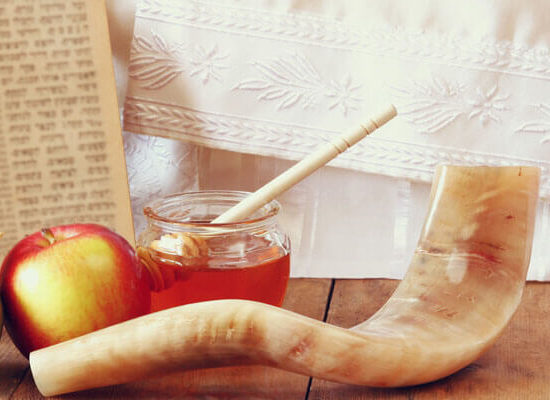The מחבר (סימן תקפ”ח סעיף ה’) writes that when Rosh Hashanah falls out on Shabbos there is no תקיעת שופר. The Gemara explains that one who is going to learn how to blow the shofar may come to carry it in רשות הרבים. Therefore chazal prohibited blowing the shofar.

The מחבר (סימן שמ”ה סעיף ז’) brings two opinions what is considered a רשות הרבים. The first opinion holds that it mainly depends if the area is sixteen amos wide. The second opinion which he brings as “ויש אומרים” holds that if it does not have 600,000 people passing through daily it is not a רשות הרבים. The מחבר (סימן ש”ג סעיף י”ח) only brings the opinion of the יש אומרים and therefore says that today there is no real רשות הרבים. The ביאור הלכה there asks according to this opinion why don’t we blow the shofar on Rosh Hashanah? There is no longer a חשש that one may carry it four amos in רשות הרבים? The ביאור הלכה leaves the question unanswered.
The poskim discuss if someone blew the shofar on Rosh Hashana that fell out on Shabbos is it considered that he was מקיים a mitzvah? The נפקא מינה would be if he made a שהחיינו on those תקיעות. There is a מחלוקת in סימן ת”ר סעיף ג’ regarding making a שהחיינו on the second day of Rosh Hashana when the first day also fell out on a weekday. The מחבר holds that you only make a שהחיינו for תקיעת שופר on the second day if the first day fell on Shabbos. If the first day is also on a weekday שהחיינו is not said on the second day. The רמ”א brings the opinion that a שהחיינו is recited on both days even if the first day was also a weekday and the שהחיינו was already said – וכן המנהג במדינות אלו. The משנה ברורה brings from the מגן אברהם that לכתחילה the בעל תוקע should wear new clothing which obligates him to make a שהחיינו.
According to the opinion of the מחבר, if a שהחיינו was said the first day it is not said again on the second day. Therefore if when one blew on Shabbos with a שהחיינו he was מקיים a mitzvah, he would not make another שהחיינו on the second day. Both רבי עקיבא איגר and the אבני נזר hold that even though he transgressed an איסור דרבנן nevertheless he fulfilled the מצוה דאורייתא of תקיעת שופר. The קונטרס קבא דקשייתא (קושיא צ”ט) holds he was not יוצא.
The רמ”א adds that on Shabbos the shofar is muktza and may only be moved לצורך גופו ומקומו like any other כלי שמלאכתו לאיסור. An example of לצורך גופו is to use it to draw water. This would only be permissible to do on Shabbos since it is not set aside for the mitzvah. However if Rosh Hashanah was not on Shabbos, even though it is permitted to move it the entire day [סימן תקצ”ו], still it cannot be used to draw water since it is הוקצה למצותו.
There is a machlokes if the היתר לצורך גופו ומקומו applies nowadays. Reb Shlomo Zalman zt”l rules that since today a shofar is only used to blow and for nothing else, it may not be moved לצורך גופו ומקומו. It may even have a דין of מוקצה מחמת חסרון כיס since we are careful not to use it for anything else. This is also the opinion of Reb Elyashiv zt”l. Reb Shmuel Kamenetzky shlit”a holds that even today it doesn’t become a מוקצה מחמת חסרון כיס. That only applies to something that you are מקפיד not to use. By the shofar this is not the case as we see the children are blowing it the entire day.1
Prepared by R’ Avrohom Yehoshua Ziskind
__________________________
1Sources:משנה ברורה,ביאור הלכה, דרשו, קובץ הלכות